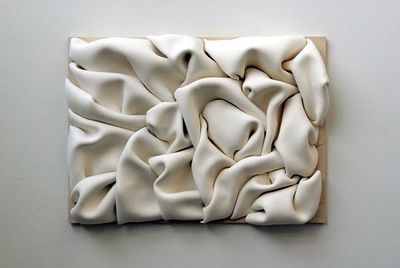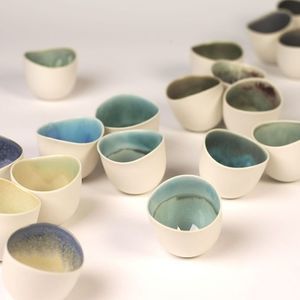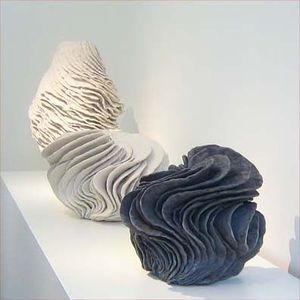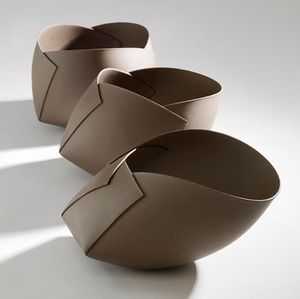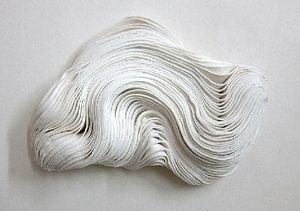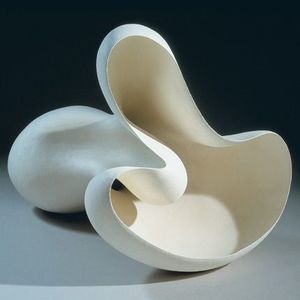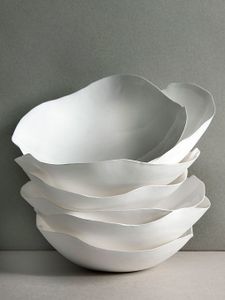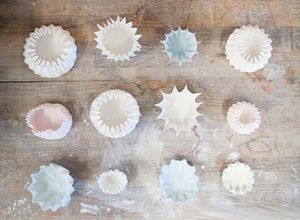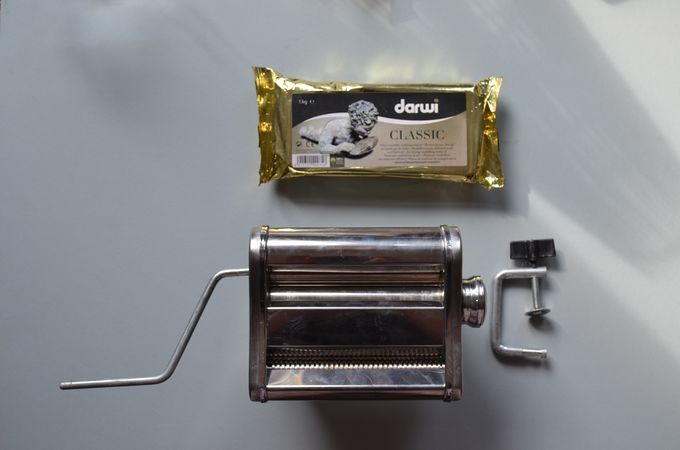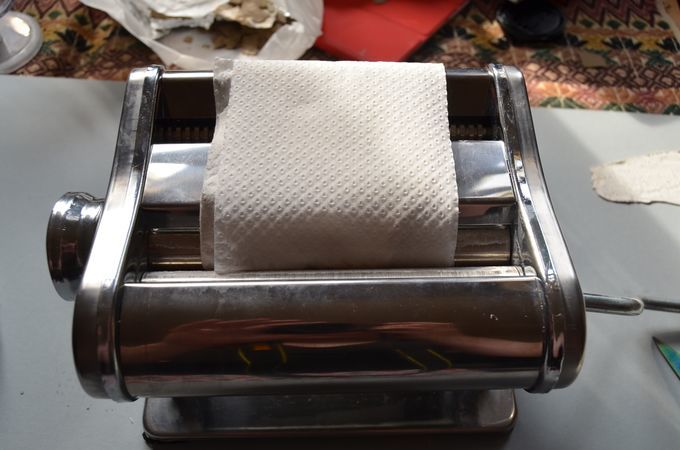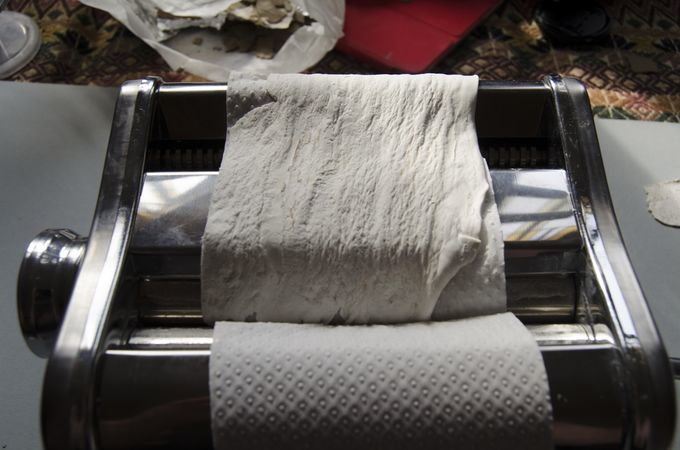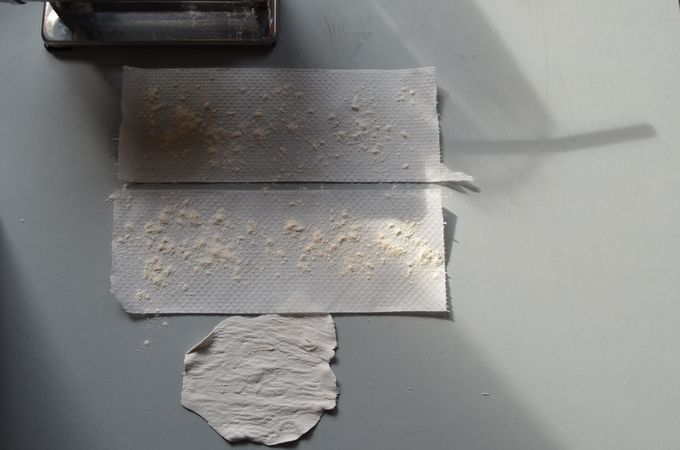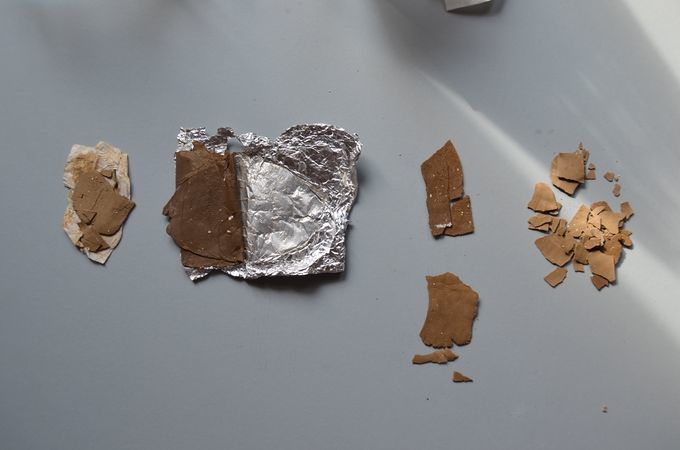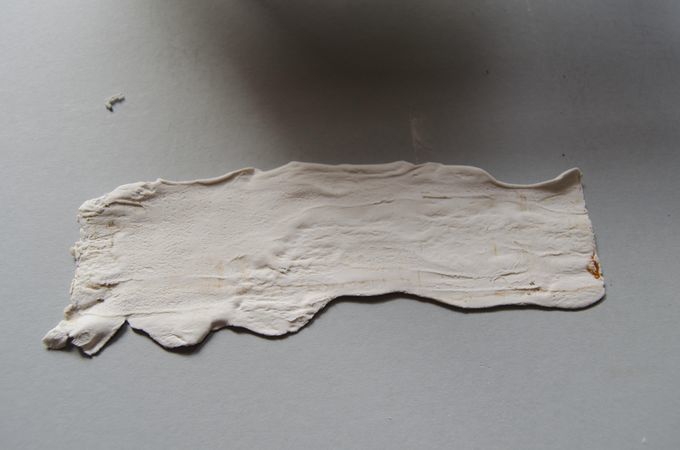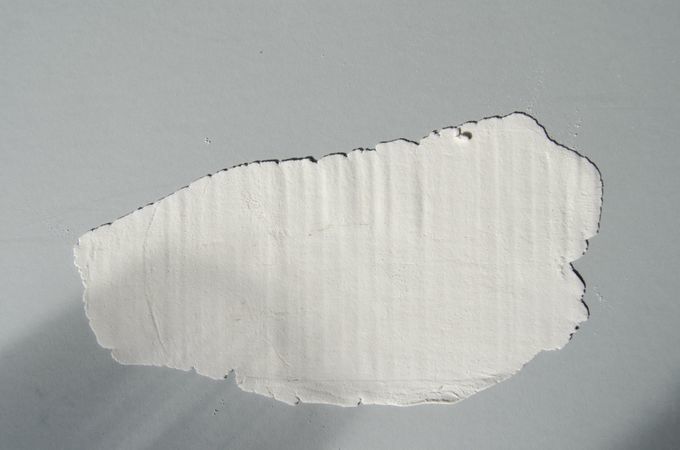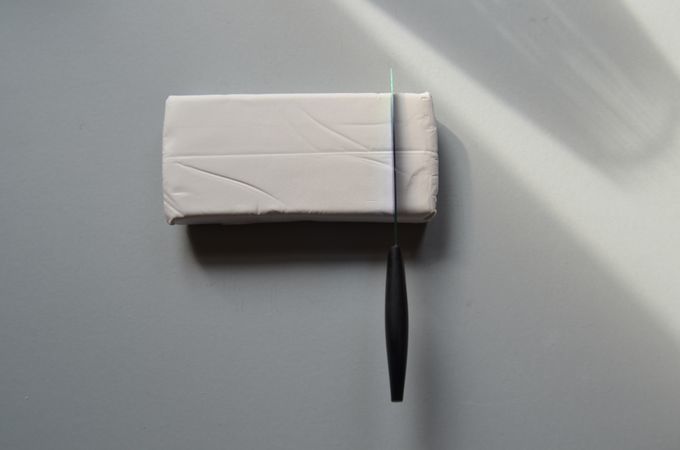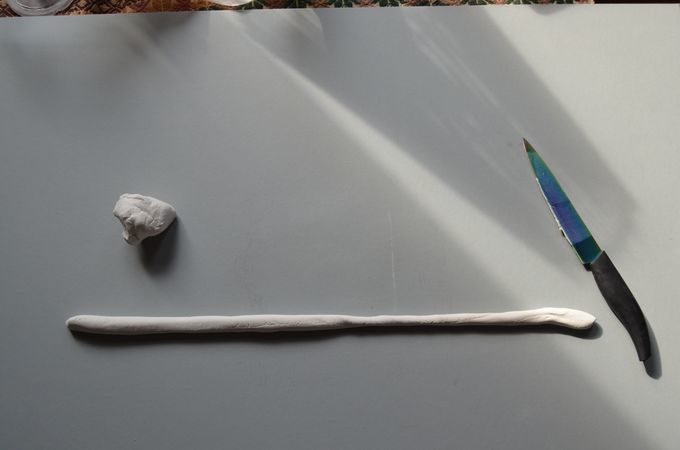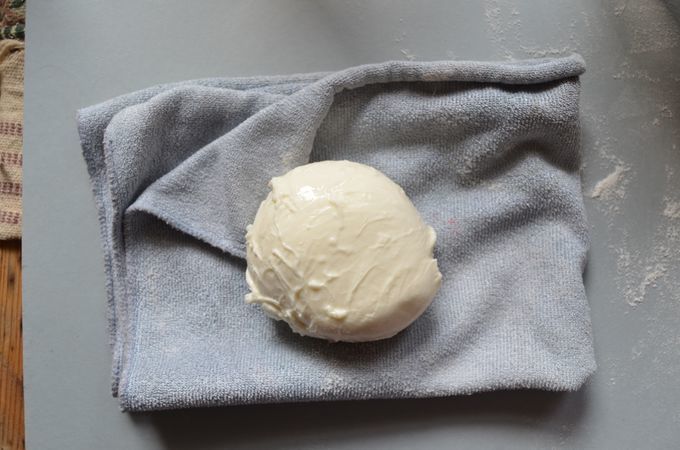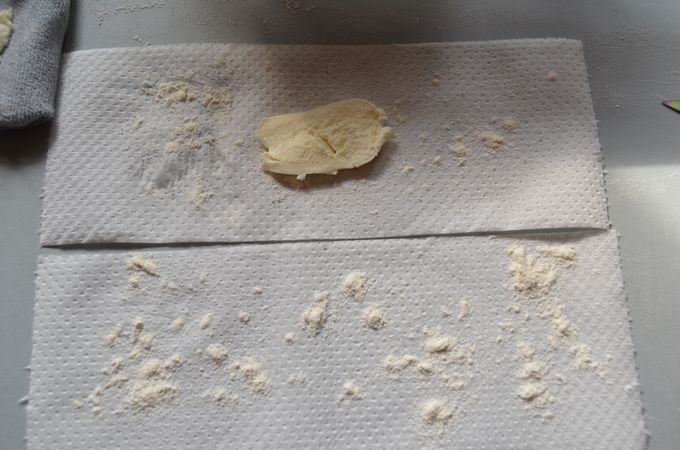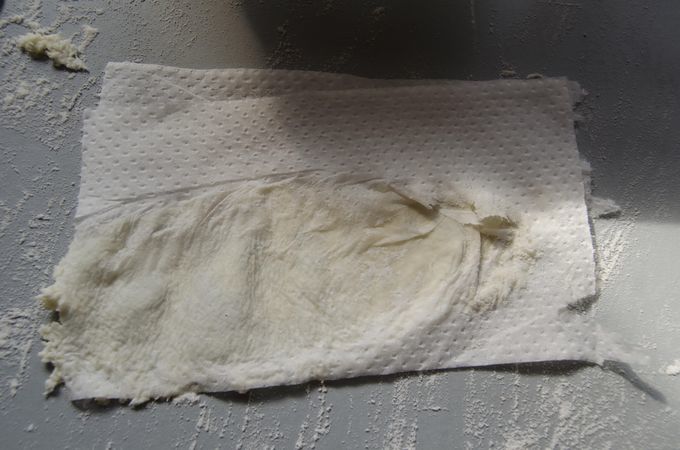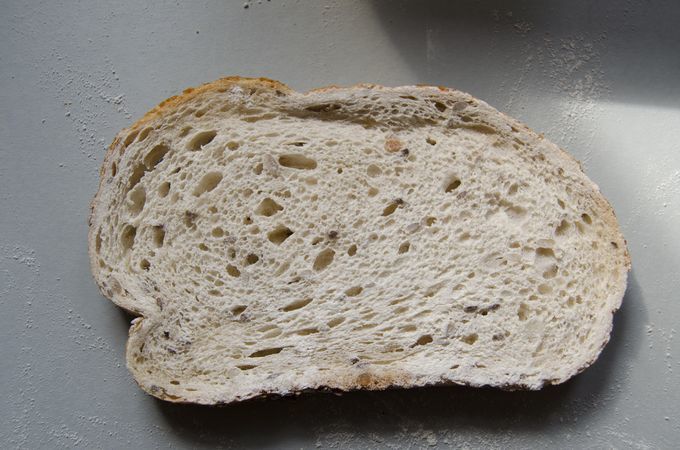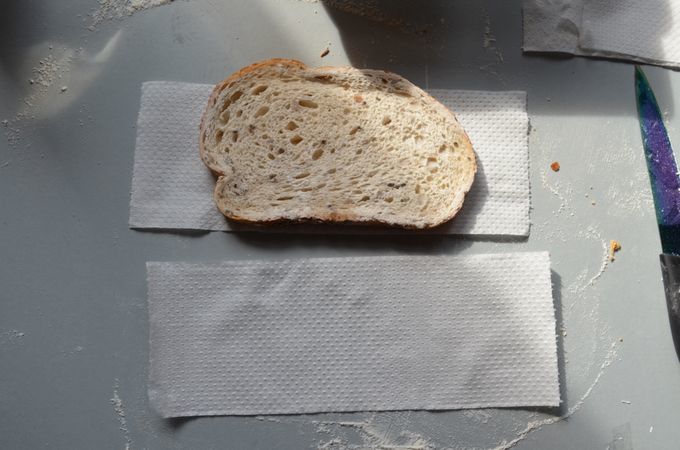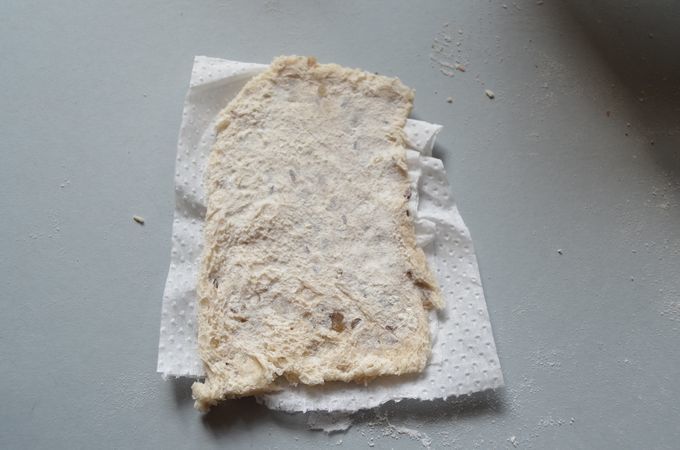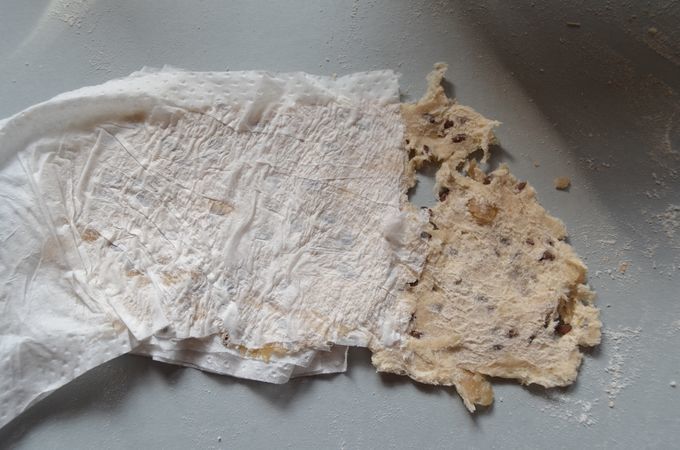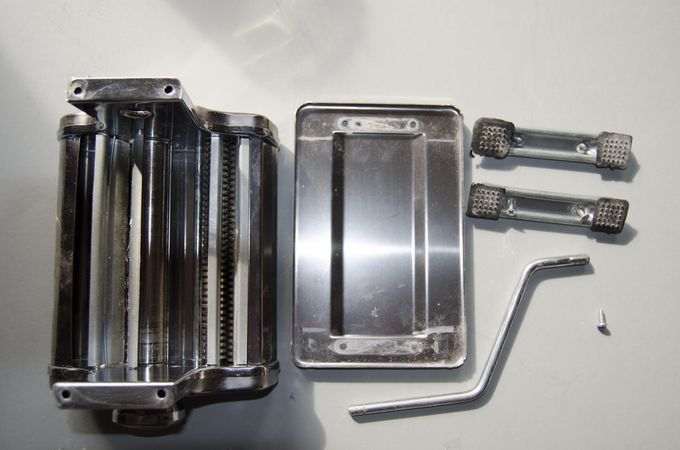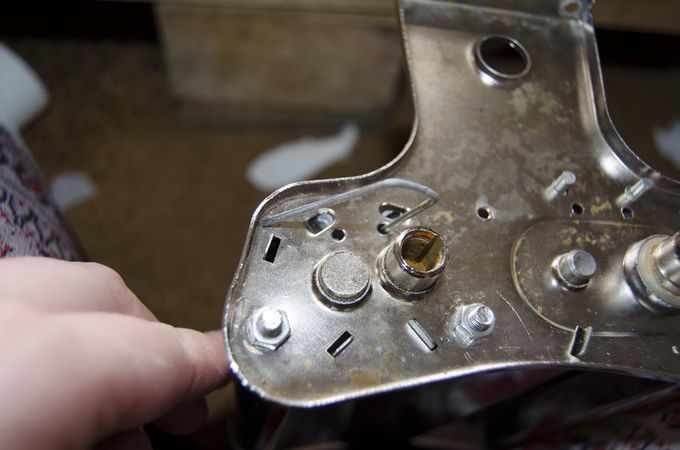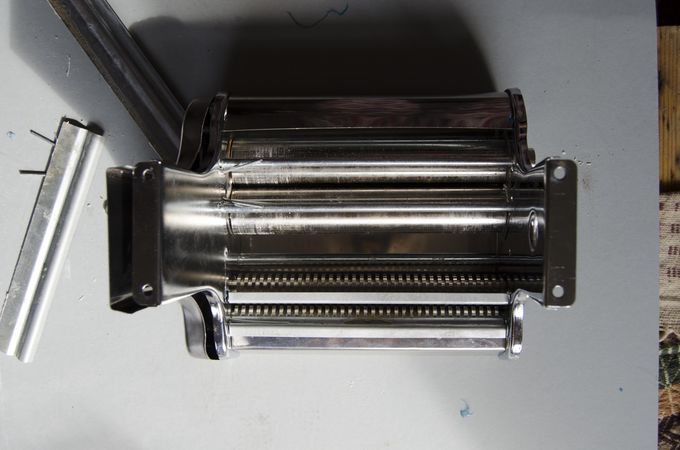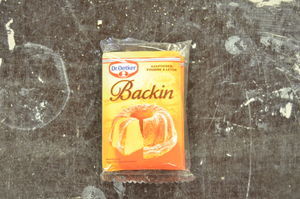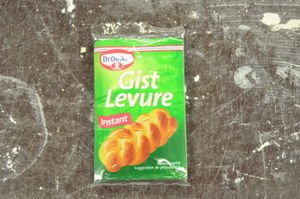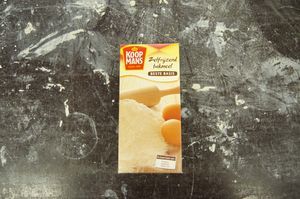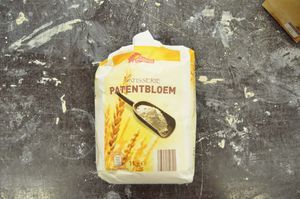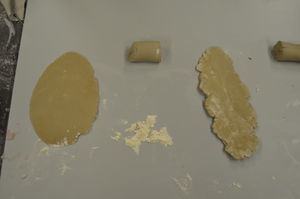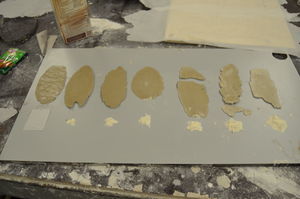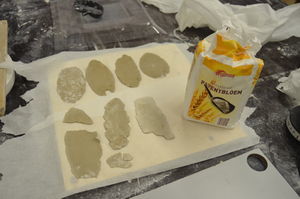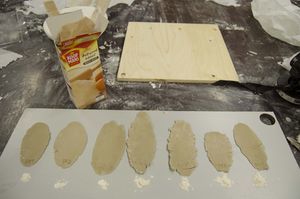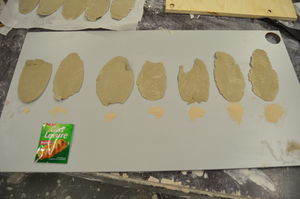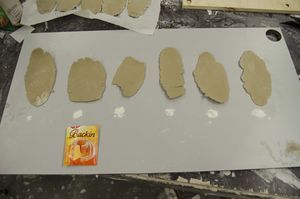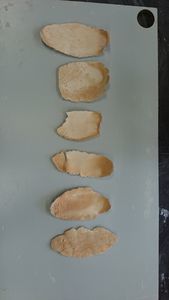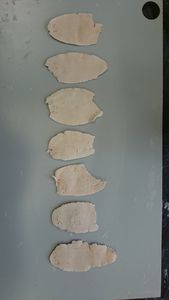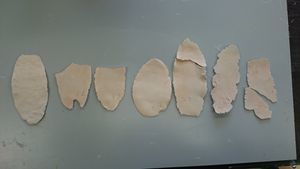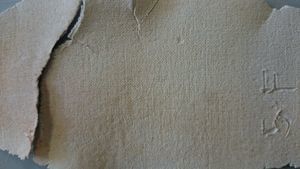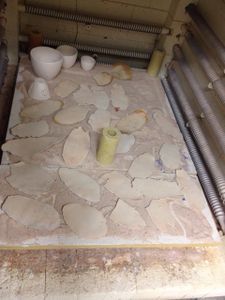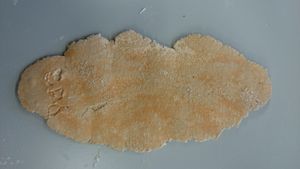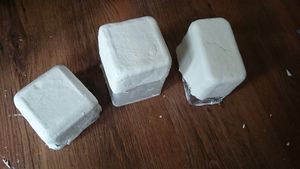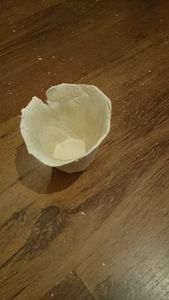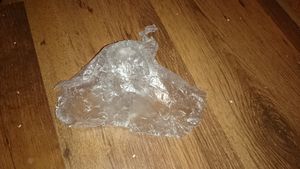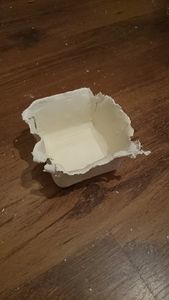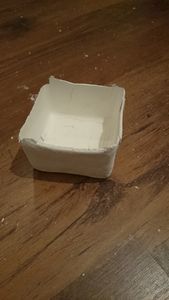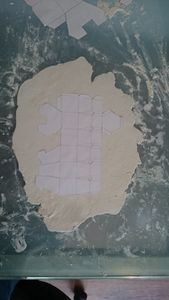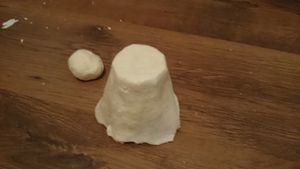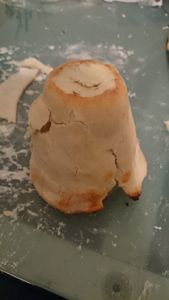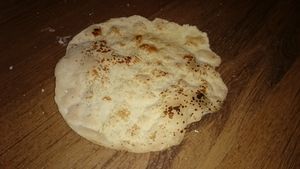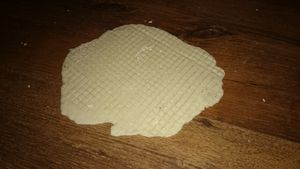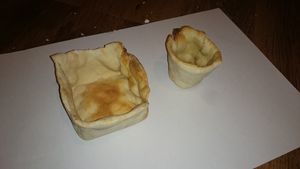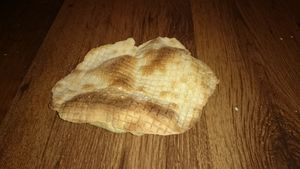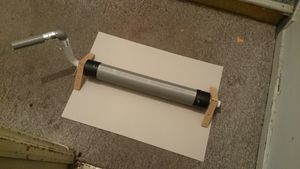User:Emma Rijk/MIC
Contents
Quarter 7 Making Is Connecting
About my work
Statement
My process started with an interest for thin ceramics that give an impression of textile.
When I started to
roll different ceramic sorts into a thin piece I decided I wanted to make my own machine.In the beginning I bought a spaghetti machine to find out what the best material would be to put in between two rollers. After finding the right substance I wanted to create my own rolls that shape the material. In the end I want to try to create a collection of dishes using the thin pieces of ceramics. The dishes will have the appearence of paper or a product you would normally throw out, but won’t have the functionality of normal dishes that can be washed for instance; furthermore my dishes won’t be able to hold liquids. The process that mostly inspires me is the pressing of the materials and the idea of giving a new look and meaning to a material. The pressing machine has a nice combination of manual labour and machinery. By changing the rolls in the machine, the machine can make an endless amount of different objects, not requiring the craftsman to master all the techniques, by simply rolling the rolls past each other. Any pattern or extrusion in the roll can make the material change shape.
The content of my work is based on a combination of a few techniques, first of all I want to create a part of a tool that can be replaced with different parts. I’ve learned more about materials and the experimenting with them: I did this in my process of finding the right substance for my spaghetti machine. Additionally, I found a project that doesn’t really fit in the story of Ruskin or the idea of industrialism. My tool is literally a combination of mastering the right combination of material and the right combination of rolls,which needs experience.However,it’s also a machine and the actual movement that gives the material shape is a repetive and not difficult as it is basically circling a wheel forward to make the rolls move the material in between. Thus, the question I would ask is whether my machine really is a machine that makes the user feel detached from the object repeating a constant, braindead movement or is the crafter enough involved in the ‘preparation’ of the actual process that it makes him feel more attached and fulfilled when he makes the object.
The machine I’ve been building will be only for me: I made the machine in a way that it fits my needs for this process and therefore it is not for commercial use. The machine works with Velcro and it exclusively for use with textile,which alienates the machine from a normal spaghetti- or clay roller.
There is a broad historical context to the basics of my tool. Already since the 1st century BC several forms of pasta have been found. My source described the beginnings of pasta as being made of a fine sheet of dough, which reminds me of the thin ceramics I was talking about earlier. The first actual pasta as we know it today has been dated in the 13th and 14th century.
Source:http://en.wikipedia.org/wiki/Pasta
During my progress I realised that I wanted to work on a craft that is my creation. My process started with a commercial object and a historic result but ended up to be a tool that provides to my exact needs. This object definitely makes me want to explore new visual language. If I had more time, I would try to find a wider variety of different roller pieces and I would like to do more tests with clay and baking that in the oven.
In the end it boils down to these categories:
- Making a tool
- Experimenting with materials
- A position in a larger debate
Why I Make
I make to find a new purpose and understanding of a historical machine. I want to push the boundaries between crafts and industrialism, ‘When is a machine bad for the well-being of an employee and what is crafts exactly?’ I want people to doubt what they think they know. I want people to reconsider what they have. In my process I’ve developed from knowing only standard crafts knowledge to a personal, unique way of making and my own drive within my process to grow. I know more about the history of making and the standpoints people can take in that part. I cannot find myself to be completely a crafter or completely involved In industrialism, this is probably because I don’t know the exact difference. I want to make to understand myself, to know when I made changes and decisions, to understand why I do something wrong or right, to see when I feel successful and when not, to feel the urge of making the next step to see the result. To look back and see what I have done.
Summary Making Is Connecting
Chapter 1
Making = feeling and thinking Feeling and thinking = part of making
Crafting can be fullfilling, nessecary, and can make a person aware of its process. This makes it possible to put ideas and knowledge in the process while the crafter also learns something in the meantime. So, because of the crafting you become a part of your work and so, it can grow and develop as long as you are a part of it’s creation. Ruskin was a social thinker and his ideas of a better society were that the industralism would have to go and we should have more respect for the people and the environment.
For Ruskin, financial wealth which does not contribute to the stock of human happiness is no wealth at all. John Ruskin - A human being can be forced to work as a ‘tool’, following the precise instructions of their masters, making things correctly, but they are dehumanized and their spirit is gagged. Or they can be allowed to ‘begin to imagine, to think, to try to do anything worth doing’ – and this might lead to roughness, failure, and shame, but also unleashes ‘the whole majesty’ of the individual.
We are always in these days endeavouring to separate the two; we want one man to be always thinking, and another to be always working, and we call one a gentleman, and the other an operative; whereas the workman ought often to be thinking, and the thinker often to be working, and both should be gentlemen, in the best sense.29
Conclusie Ruskin his great contribution was to establish individual autonomous creativity as a core value which society must nurture, not crush, if it is to retain any moral authority, or quality of life. THE MEANING OF MAKING II: CRAFT TODAY
Les Theorie practice
Ideas Ruskin
Crafting can be important for being happy and feeling like a part of a creation. With the industrialism people cant be involved in the process enough to gain expertise and fullfilment wich ends up in people feeling like a part of a machine, lifeless and unpersonal.
Ideas Morris
Morris believed in the power of individually crafted work and the importance of individual self-expression. Thus he was an opponent of rational systems, which tend to destroy this individual freedom and creativity. Morris fancied the Middle Ages and describes them as a time in which there was a real community with values, arts of its own and no systematic degradation of the human spirit. Morris thought of hands-on engagement with craft, as the true way of understanding craft.
Even though Morris had a vision of a socialist society, he was the owner of a business creating handcrafted luxury objects, sold to the elite. This might be explained by his “all-or-nothing” attitude: He would rather create the ideal book than creating a lower quality book, due to limited resources.
Whilst ‘fine art’ is more dependent on hierarchies and elites, upon which it relies to validate the work, craft is more about creativity and the process of making at a vibrant, grassroots level: proud of its grounded, everyday nature, and not insecurely waiting for an artworld critic, collector, or curator to one day say that it was all worthwhile. Punk ideologies are a group of varied social and political beliefs associated with the punk subculture. In its original incarnation, the punk subculture was primarily concerned with concepts such as anti-establishment, equality, freedom, anti-authoritarianism,individualism, direct action, free thought and non-conformity. What are the similarities and differences between Ruskin and Karl Marx? Karl Marx was a German philosopher, economist, sociologist. Marx's work in economics laid the basis for much of the current understanding of labor and its relation to capital, and subsequent economic thought. He is one of the founders of sociology and social science. Marx believed, were run on behalf of the ruling class and in their interest while representing it as the common interest of all.
Arts & Crafts movement: The Arts and Crafts philosophy derived partly from Ruskin's social criticism, which related the moral and social health of a nation to the qualities of its architecture and to the nature of work. The aesthetic and social vision of the Arts and Crafts Movement also derived from ideas developed in the 1850s by the Pre-Raphaelite Brotherhood. The Brotherhood was formed by William M. Morris and Edward Burne-Jones. The Arts and Crafts style emerged from the attempt to reform design and decoration and the reaction against contemporary styles that the reformers associated with machine-production. The movement started as a rebellion against the period of the industrial revolution and the cheap and plain massproduction of the victorian period.
Whilst ‘fine art’ is more
dependent on hierarchies and elites, upon which it relies
to validate the work, craft is more about creativity and the
process of making
Chapter 2
DIY can be spread in 3 different kinds: The decorative, the vernacular and the politics of work. Decorative: craft that doesnt meet up to the standards of ‘fine art’ The vernacular: craft that speaks the language of the craftsman, were it comes from, wat it knows and wat it can use. The politics of work: craft with a message Central to the diy culture was that all was of equal status, to connect with nature, people and themselves
Ivan Illich believes that children should learn from experience and not from a forced schooling system that only learns abstract ways and not everyday important things like building, growing food etc. Stewart Brand: wanted people to see a picture of the whole earth so that people would be more concious of their place in a unlimited source of the earth
PUNK DIY A similar but different version of the DIY ethos is the ‘lofi ’ music and zine culture, infl uenced in part by the punk scene. This DIY culture is characterized by a rejection of the glossy, highly produced, celebrity-oriented mainstream of popular culture.
Amy Spencer Believes in a different magazine called zine to be a gift, its a about feminism, something she was very involved with.
DIY culture and web 2.0 The internet has been a great source for the DIY culture. It helped the group of people with the same believes to find a platform to learn, create and share together. The main reason why people in this time decide to do DIY is because of the sustainability, this is the first century were we recognise the damage we created to the earth and also the urge to stop it. The biggest cause of damage to the earth has to do with the constant urge of humankind to ‘gather more and more stuff and most of all new stuff because this brings a bigger satisfaction. This is a primal instinct that was usefull when we still lived in small huts with little recources, nowadays the urge is unnecary and caused a lot of serious problems to the earth and our future. Also within the sustainabiltiy theme, the internet has made much improvement to a ‘cleaner’ way of sharing. A while ago the writer of the book had serious trouble finding a publisher for his book, wich eventually caused him to send 800 copies of his book around the world in hope for recognition. He said that the internet would have made his goal of reaching a wide audience and finding the right people much easier.
Inspiration
Spaghetti
Oven
Folding
- Dough4
Folding around box
